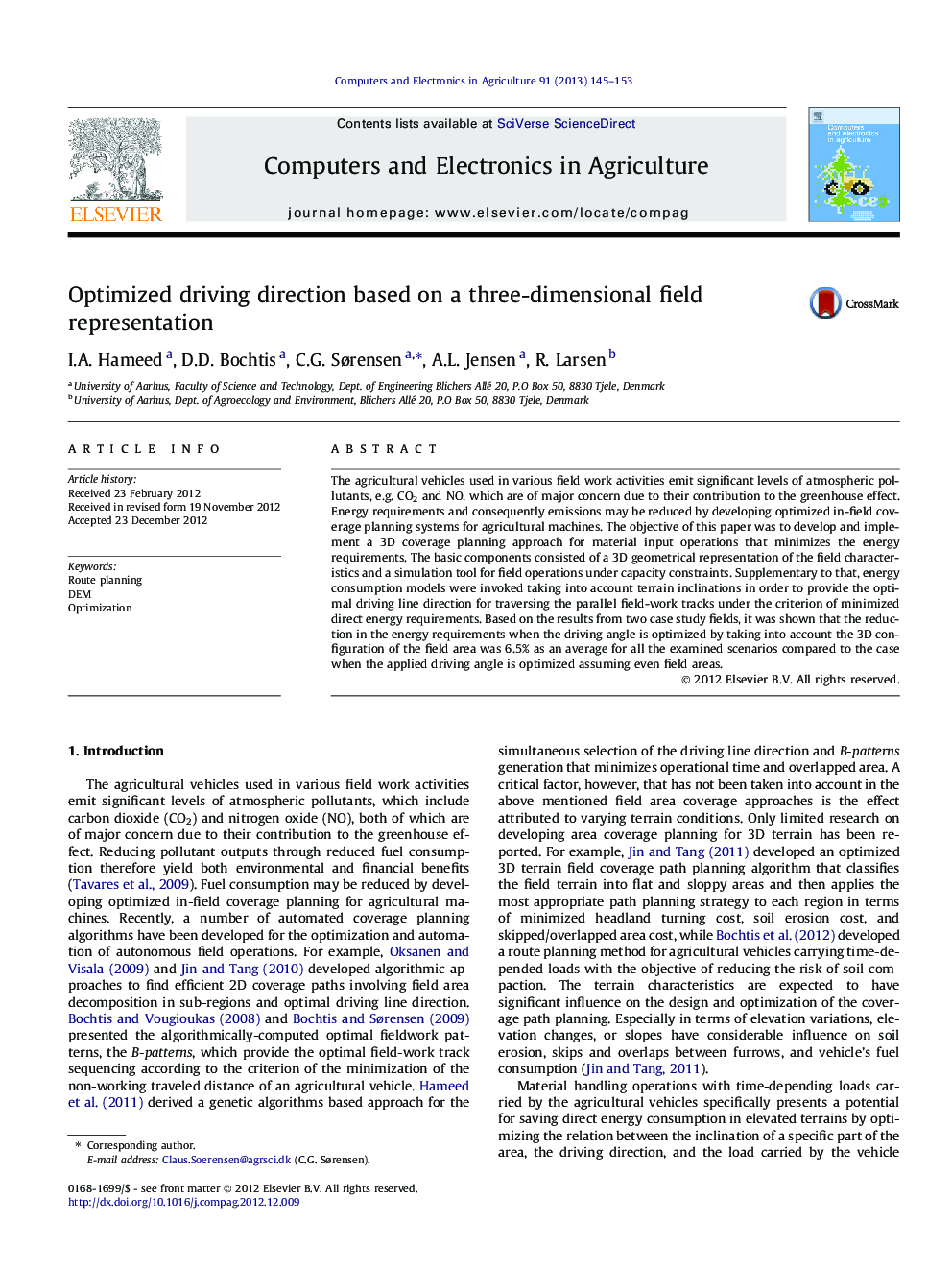| Article ID | Journal | Published Year | Pages | File Type |
|---|---|---|---|---|
| 84542 | Computers and Electronics in Agriculture | 2013 | 9 Pages |
The agricultural vehicles used in various field work activities emit significant levels of atmospheric pollutants, e.g. CO2 and NO, which are of major concern due to their contribution to the greenhouse effect. Energy requirements and consequently emissions may be reduced by developing optimized in-field coverage planning systems for agricultural machines. The objective of this paper was to develop and implement a 3D coverage planning approach for material input operations that minimizes the energy requirements. The basic components consisted of a 3D geometrical representation of the field characteristics and a simulation tool for field operations under capacity constraints. Supplementary to that, energy consumption models were invoked taking into account terrain inclinations in order to provide the optimal driving line direction for traversing the parallel field-work tracks under the criterion of minimized direct energy requirements. Based on the results from two case study fields, it was shown that the reduction in the energy requirements when the driving angle is optimized by taking into account the 3D configuration of the field area was 6.5% as an average for all the examined scenarios compared to the case when the applied driving angle is optimized assuming even field areas.
► A DSS for operations involving in-field transports. ► Route planning in a 3D environment. ► Simulation of field machinery operations. ► Minimizing direct energy requirements associated within-field operations.
